Lot 1. An inscribed archaic bronze ritual food vessel cover, Late Western Zhou dynasty. Diameter 8⅞ in., 22.6 cm. Lot sold: 264,600 USD. (Estimate: 4,000 - 6,000 USD). © Sothebys.
the interior case with a twelve-character inscription reading Shi X Fu zuo zungui qi wannian yongbaoyong (Shi X Fu made this precious gui, to be treasured and for the eternal use of ten thousand years).
Note: The form and the inscription of the present cover closely match the Shi Zhang Fu dui cover illustrated in Xuanhe bogu tulu [Illustrated catalogue of antique treasures from the Xuanhe hall], Boruzhai chongxiu edition, Wanli 16th year (1588), vol. 17, pp 25-26 (fig. 1). The two inscriptions have some minor discrepancies in the details of a few characters, as can be expected, since the book illustration is a woodblock print instead of a rubbing that is directly taken from the piece. It is also noticeable that the measurements of the present cover is slightly inconsistent with the records from the book. This inconsistency can also be seen on another example, the Cheng Fu Gui ding, where the current published diameter does not match the record from the Xuanhe bogu tulu. The Cheng Fu Gui ding is now in the National Palace Museum, Taipei, and illustrated in Wu Zhenfeng, Shangzhou qingtongqi mingwen ji tuxiang jicheng [Compendium of inscriptions and images of bronzes from the Shang and Zhou dynasties], vol. 2, Shanghai, 2012, no. 00924.
fig. 1 Shi Zhang Fu Dui cover, illustrated in Xuanhe Bogu Tulu [Illustrated Catalogue of Antique Treasures from the Xuanhe Hall], Boruzhai Chongxiu edition, Wanli 16th year (1588), vol. 17, pp 25-26.
Commissioned by the Emperor Huizong of Song (r. 1100-1126), Xuanhe bogu tulu is the first systematic catalogue of archaic bronzes from an imperial collection in China's history. Highly influential, the book has been referenced frequently by scholars. If the present cover is indeed the same one from this publication, it also appears in the following literature:
Wang Qiu, Xiaotang jigulu [Collection of antiquities from the Xiaotang], Song dynasty, vol. 2, p. 61.
Xue Shanggong, Lidai zhongding yiqi kuanzhi fatie [Rubbings of the inscriptions from the archaic bronzes of the past dynasties], 1935, p. 121.
The Institute of Archaeology, Chinese Academy of Social Sciences, ed., Yinzhou jinwen jichengshiwen [Interpretations of the compendium of Yin and Zhou bronze inscriptions], vol. 3, Hong Kong, 2001, no. 3789.
The Institute of Archaeology, Chinese Academy of Social Sciences, ed., Yinzhou jinwen jicheng [Compendium of Yin and Zhou bronze inscriptions], Beijing, 2007, no. 03789.
Wu Zhenfeng, Shangzhou qingtongqi mingwen ji tuxiang jicheng [Compendium of inscriptions and images of bronzes from the Shang and Zhou dynasties], vol. 9, Shanghai, 2012, no. 04667.
Interestingly, there have been different interpretations of the the second character in the inscription. The Xuanhe bogu tulu records it as zhang 張, with 弓 being the left radical. The more modern publications identify it as chang 立長, with 立 as the left radical. This is probably caused by the slight variation of this character in the different versions of the Xuanhe bogu tulu. The original Xuanhe bogu tulu from the Song dynasty does not appear to be preserved. The only available versions now are later reprints of the Song edition, and there are usually some discrepancies amongst the different versions. A closer examination of this particular character on the present cover, however, reveals the left radical, although closely resembling both 弓 and 立, is actually 攴/攵. It should then read 攴長/攵長, which does not appear to be a previously recognized character.
Emperor Huizong’s Bronze?
No collection of Chinese art has ever come close to that formed by the emperors. Finding a work that can be traced to an imperial collection is the holy grail of Chinese art. Now, in the upcoming Wou sale (A Journey Through China’s History. The Dr Wou Kiuan Collection Part 1 | 22 March 2022) in New York is an inscribed bronze (lot 1) that can possibly be the same one treasured by the Emperor Huizong (r. 1100-1126) of the Northern Song dynasty (960-1127) and recorded in the imperial collection of the Song court.
The Wou cover and its inscription closely match a bronze cover illustrated in the renowned Northern Song dynasty imperial catalogue of the court bronze collection treasured in the XuanheHall 宣和殿, Xuanhe bogu tulu 宣和博古圖錄 [Illustrated catalogue of antique treasures from the Xuanhe hall] (vol. 17, pp 25-26), which was compiled under the direct order of the Emperor Huizong. The likelihood of another bronze cover with this same inscription being preserved without its vessel is extremely slim. Whilst challenging to prove definitively, this article explores why the Wou cover is likely the same one from the Xuanhe bogu tulu.
The possibility of the present bronze being the one from the Xuanhe bogu tulu has significant implications:
- The first ever surviving bronze from the Northern Song imperial collection appearing in the market.
- One of the only two surviving bronzes from the Northern Song imperial collection ever known today.
- A surviving relic from the genesis of jinshixue 金石學 (epigraphy) in the history of China.
- A historic rediscovery of a lost treasure that has not been seen for nearly a millennium.
- An academic breakthrough in unravelling the true name of the maker of this bronze.
Provenance
Collection of Zhao Ji (1082-1135), Emperor Huizong of Song (r. 1100-1126).
The Northern Song Court Collection, treasured in the Xuanhe Hall.
Collection of His Excellency Hugues Le Gallais (1896-1964).
Sotheby's London, 11th November 1958, lot 80.
Collection of Dr Wou Kiuan (1910-1997).
Wou Lien-Pai Museum, 1968-present, coll. no. E.6.4.
Literature
Song dynasty publications:
Wang Fu et al., Xuanhe bogu tulu [Illustrated catalogue of antique treasures from the Xuanhe hall], Daguan reign (1107-1110) to Xuanhe reign (1119-1125), vol. 17, pp 25-26.
Wang Qiu, Xiaotang jigulu [Collection of antiquities from the Xiaotang], Song dynasty, vol. 2, p. 61.
Xue Shanggong, Lidai zhongding yiqi kuanzhi fatie [Rubbings of the inscriptions from the archaic bronzes of the past dynasties], Southern Song dynasty, p. 121.
Modern publications:
The Institute of Archaeology, Chinese Academy of Social Sciences, ed., Yinzhou jinwenjichengshiwen [Interpretations of the compendium of Yin and Zhou bronze inscriptions], vol. 3, Hong Kong, 2001, no. 3789.
The Institute of Archaeology, Chinese Academy of Social Sciences, ed., Yinzhou jinwenjicheng [Compendium of Yin and Zhou bronze inscriptions], Beijing, 2007, no. 03789.
Wu Zhenfeng, Shangzhou qingtongqi mingwen ji tuxiang jicheng [Compendium of inscriptions and images of bronzes from the Shang and Zhou dynasties], vol. 9, Shanghai, 2012, no. 04667.
Both the form and inscription of the Wou cover display a remarkable resemblance to the one (referred as the Shi Zhang Fu dui cover) from the Xuanhe bogu tulu.
Comparison of the form
Left: Line drawing illustrated in The xuanhe bogu tulu, Boruzhai Edition, Wanli 16th year (1588)
Right: photo of the present lot.
Comparison of the inscription
Left: Woodblock print of the inscription in the Xuanhe Bogu Tulu, Boruzhai edition. Center: Inscription of the present lot. Right: Rubbing of the inscription of the present lot.
Attributing any bronze to the Xuanhe bogu tulu is not an easy task, due to inaccuracies in the details of the works illustrated and the fact that the original versions of the catalogue are no longer extant. Our knowledge of what was retained in the collection is based purely on later versions of the catalogue, which not only illustrate variations with the pieces themselves but also from edition to edition. This article explores some of these discrepancies and the likelihood that the Wou Kiuan cover is indeed the same one illustrated in the Xuanhe Bogu tulu.
Inscription of the Shi Zhang Fu dui cover in the different versions of the Xuanhe bogu tulu
Such discrepancies can also be seen from another example, the Zhou Jie ding 周節鼎, published in the Xuanhe bogu tulu, vol. 3, p. 15, where the single pictogram of the bronze is inconsistent in the different versions of the book.
Left: Boruzhai edition
Right: Yizhengtang edition
In addition to the discrepancies between the different versions of the book, inaccuracies and errors are also prevalent in the Xuanhe bogu tulu, as well as in other related early bronze publications.
One of the bronzes, the Xiao Chen Ling ding 小臣夌鼎, from the Xuanhe bogu tulu (vol. 2, p. 14) has a rubbing of its inscription included in Liu Tizhi’s Xiaojiao Jingge jinwen taben [Rubbings of bronze inscriptions in the Xiaojiao Jingge], 1935, vol. 3, p. 17. A comparison of the rubbing and the woodblock print clearly demonstrates that the illustration from the Song catalogue is not a precise transcription of the actual bronze inscription. In addition to the numerous inaccuracies on the characters, there is even an extra ci 賜 mistakenly included in woodblock print.
Rubbing from the Xiaojiao Jingge jinwen taben.
The Cheng Fu Gui ding from the National Palace Museum, Taipei, is currently the only surviving bronze that has been widely accepted by scholars to be from the Northern Song court collection and the Xuanhe bogu tulu (vo. 1, p. 26). The ding was included in the exhibition Possessing the Past. Treasures from the National Palace Museum, Taipei, The Metropolitan Museum of Art, New York, 1996, p. 221, pl. 96. In the exhibition catalogue, James C.Y. Watt acknowledges (p. 220) that there are usual minor misinterpretations of the details of the decoration in the illustrations from the Xuanhe bogu tulu (1752 edition). In addition to the minor inaccuracies in the design, the diameter of this ding (16.5 cm) was also incorrectly recorded in the Xuanhe bogu tulu by about 10% less.
Cheng Fu Gui ding illustrated in Possessing the Past (left) and Xuanhe bogu tulu, Yizhengtang edition (right).
Cheng Fu Gui ding published in the Xuanhe bogu tulu, Yizhengtang edition.
Another example is a bronze zun (Fu Gui zun) included in both the Xuanhe bogu tulu (vol. 6, p. 5) and the Ningshou jiangu 寧壽鑑古 [Antiquity appraisal of Tranquil and Longevity] (vol. 3, p. 20), a bronze catalogue commissioned by the Qianlong emperor on the imperial collection of archaic bronzes housed in the Ning Shou Palace 寧壽宮. The same bronze was recorded in the two books with numerous discrepancies in the details of the design and inscription. Comparing the recorded weight of this zun from both books, there is also an approx. 35% difference in the numbers after the conversion.
Fu Gui zun published in the Xuanhe bogu tulu, Boruzhai edition.
Fu Gui zun published in the Ningshou Jiangu.
Lastly, the Hou Chuo fang ding 厚趠方鼎 in the Shanghai Museum, Shanghai, is included in the exhibition Mirroring China’s Past. Emperors, Scholars, and their Bronzes, The Art Institute of Chicago, Chicago, 2018, cat. no. 58. This bronze was published in a Southern Song dynasty bronze catalogue by Lü Dalin 呂大臨, Xu Kaogutu 續考古圖 [Supplement to the illustrated investigation of antiquity] (vol. 4, p. 26), which features the line drawing of a completely different vessel. Dr. Wang Tao notes in the exhibition catalogue ‘as the book is known to contain errors, it could be a mismatch, or a case of the author drawing an imagined illustration without actually having seen the vessel’ (op. cit., 2018, p. 97).
Photo of the Hou Chuo fang ding and the rubbing of its inscription illustrated in Mirroring The Past.
Hou Chuo fang ding published in Xu Kaogutu.
Sotheby's. A Journey Through China's History. The Dr Wou Kiuan Collection Part 1, New York, 22 March 2022

/https%3A%2F%2Fprofilepics.canalblog.com%2Fprofilepics%2F1%2F0%2F100183.jpg)
/https%3A%2F%2Fstorage.canalblog.com%2F03%2F02%2F119589%2F96711876_o.jpg)
/https%3A%2F%2Fstorage.canalblog.com%2F11%2F31%2F119589%2F94773502_o.jpg)
/https%3A%2F%2Fstorage.canalblog.com%2F20%2F83%2F119589%2F94772815_o.jpg)
/https%3A%2F%2Fstorage.canalblog.com%2F26%2F72%2F119589%2F75604929_o.jpg)
/https%3A%2F%2Fstorage.canalblog.com%2F59%2F60%2F119589%2F26458628_o.jpg)




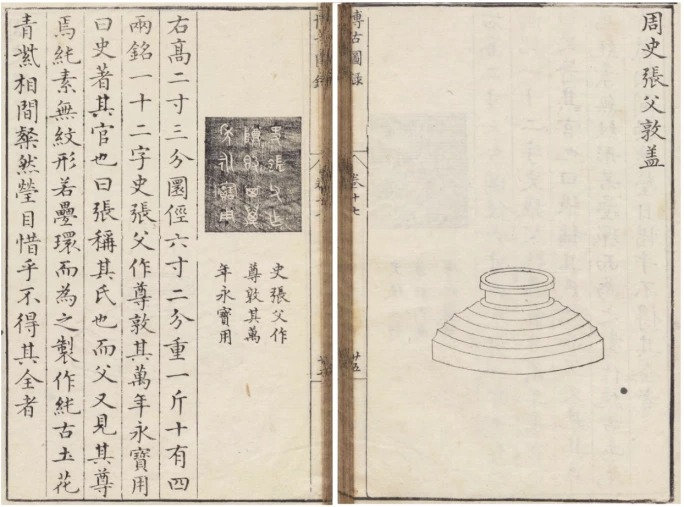

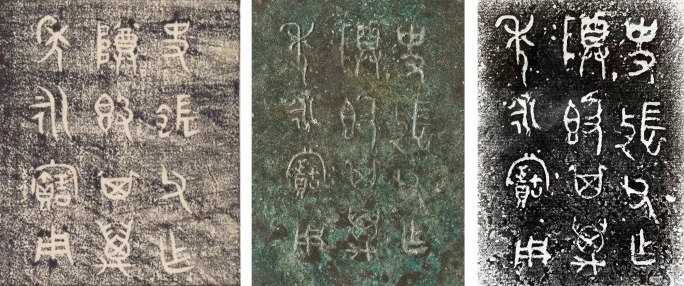




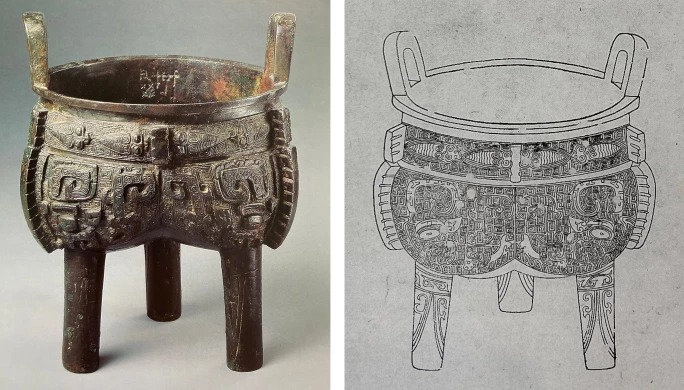
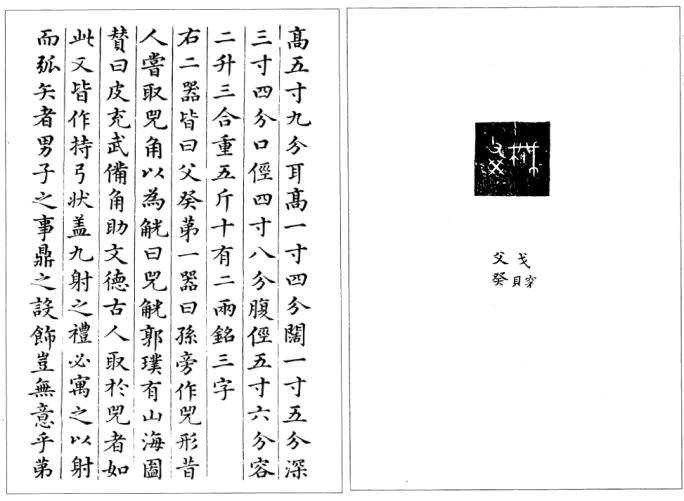
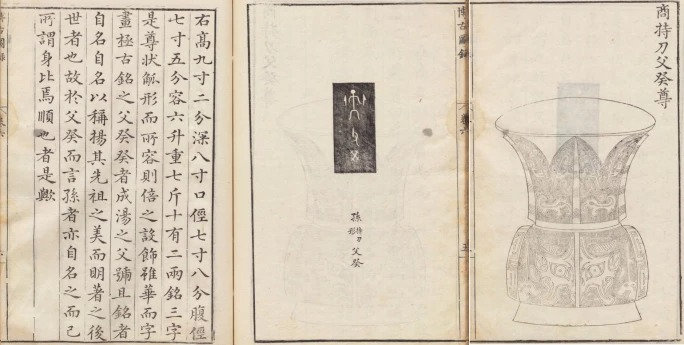





/http%3A%2F%2Fstorage.canalblog.com%2F26%2F82%2F119589%2F129521060_o.jpg)
/http%3A%2F%2Fstorage.canalblog.com%2F57%2F33%2F119589%2F129509527_o.jpg)
/http%3A%2F%2Fstorage.canalblog.com%2F26%2F45%2F119589%2F125979555_o.jpg)
/http%3A%2F%2Fstorage.canalblog.com%2F53%2F35%2F119589%2F112010794_o.jpg)